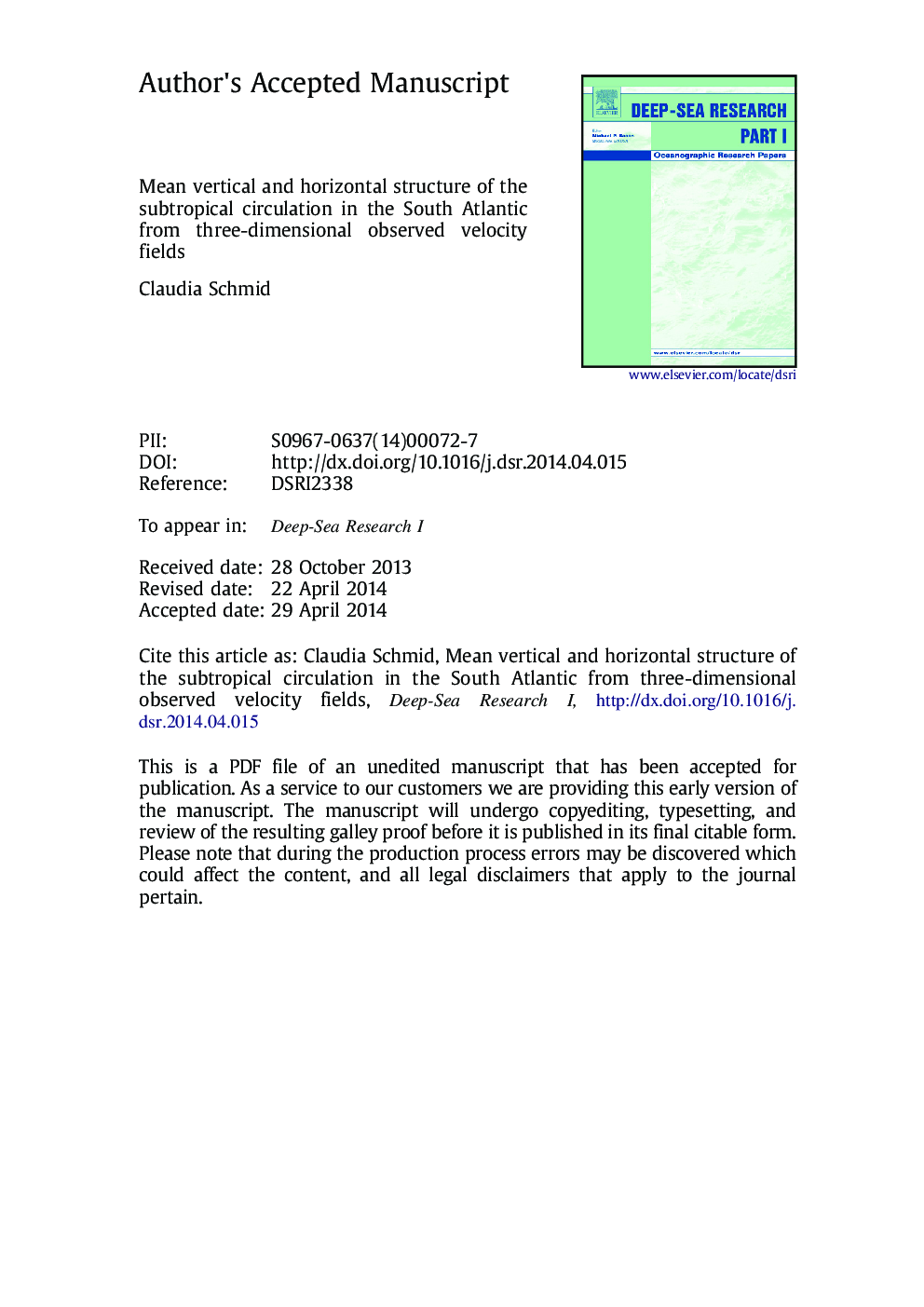| Article ID | Journal | Published Year | Pages | File Type |
|---|---|---|---|---|
| 6383666 | Deep Sea Research Part I: Oceanographic Research Papers | 2014 | 67 Pages |
Abstract
An analysis of the mean three-dimensional horizontal circulation in the subtropical South Atlantic based on velocity fields derived primarily from Argo data and AVISO sea surface heights, collected in the years 2000-2012, provides new insight into the zonal and meridional transports in the subtropical gyre. The velocity fields reveal the reduction of the latitudinal extent of the subtropical gyre with increasing depth that is mainly due to a southward shift of the westward flowing branch of the subtropical gyre, which is most pronounced near the western boundary. An analysis of zonal and meridional transports in the subtropical gyre in five 400 m thick layers from the surface to 2000 m reveals an interior pathway from the South Atlantic Current (SAC) to the Southern South Equatorial Current (SSEC) between 18°W and 1°E. At 35°S the northward transport in this longitude band ranges from 5.5 Sv (1 Sv=1 Sverdrup=106m3sâ1) in the shallowest layer to 3.5 Sv in the deepest layer, and adds up to total transport of 14.6 Sv in the upper 800 m. Within the uncertainty of the estimated transports, these northward transports are consistent with the east-to-west strengthening of the SSEC in 18°W and 1°E (e.g. 14.2 Sv in the upper 800 m). For the SAC, the change of the transport has the correct sign, but the west-to-east shrinking of the transport is larger than the northward transport, which suggests a transfer of water from the SAC to the Antarctic Circumpolar Current. With respect to the boundary currents that are part of the subtropical gyre, the southward transport of the western boundary current in the upper 2000 m increases from 5.2 Sv at 28°S to 44.2 Sv at 33°S. This is followed by a decrease to 22.2 Sv at 36°S and another increase to 38.7 Sv at 39°S. Further analysis shows that the increase of the transport by 15.2 Sv between 31°S and 33°S is primarily due to the small recirculation cell just east of the Brazil Current that has a northward transport of 13.1 Sv at 35°S in the upper 2000 m. Along the eastern boundary, the transport of the Benguela Current within the upper 1200 m at 35°S is 23.9 Sv, increasing by about 10 Sv between 37°S and 32°S. To the east of this current, the Benguela Poleward Undercurrent can be detected in the velocity and salinity fields derived for the core of the Antarctic Intermediate Water. This current extends as far south as 30°S and potentially even to 33°S.
Related Topics
Physical Sciences and Engineering
Earth and Planetary Sciences
Geology
Authors
Claudia Schmid,
